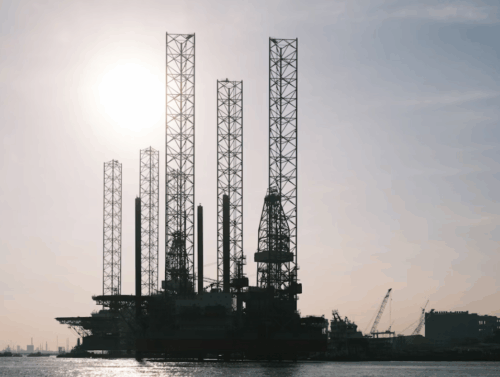Aug
2025
What Informed Investors Know About Energy Market Cycles
DIY Investor
12 August 2025

The energy market doesn’t follow a straight trajectory as it moves in cycles. The energy market is multifactorial, with global supply, shifting demand, policy changes, and corporate behavior, making it one of the most cyclical sectors in the market today – by Katie Pierce
Because these are cycles, they can sometimes be predictable. Hence, it’s necessary for investors and traders to understand how these market cycles work to know when to hold, enter, and step back.
Those who consistently succeed in energy investing don’t just follow the headlines. In fact, once an event reaches the headlines, it might often be too late. What successful investors do is read between the lines, determining which among their signals are relevant and which ones are noise. But what exactly do informed investors know that others overlook?
Why The Energy Sector Moves in Cycles
Unlike consumer goods or tech, supply in the energy sector, especially oil and gas, responds slowly to market signals. If prices rise suddenly, it doesn’t mean new barrels of oil will immediately hit the market.
Exploration, permitting, drilling, and production take time. This delay creates a feedback loop: high prices stay high longer than they should, followed by overproduction, then eventually, a sharp downturn.
Conversely, when prices fall, companies don’t instantly pull the plug. They operate existing wells, cut costs, and slow down expansion. In this case, supply continues to outpace demand for a while before stabilizing. This lag strengthens the cyclical pattern investors have come to expect.
Every upcycle sees an influx of capital: energy firms announce new exploration campaigns, increase drilling activity, and invest in infrastructure. But when too much capital floods in too fast, it leads to overproduction. What goes up easily can just as quickly go down. Prices inevitably correct, and companies are forced to pull back. Eventually, this downturn creates the perfect storm for the next supply shortage and price recovery to occur.
The Phases of a Typical Energy Market Cycle
Energy markets tend to follow a predictable pattern, though the timing and intensity of each phase can vary.
-
Recovery (Undersupply Phase)
This phase begins after a downturn. Production has slowed, CapEx has been slashed, and global inventories are shrinking. Prices begin to rise as demand picks up and supply struggles to catch up. Often, investor interest is still muted at this stage. Those who go against the grain may find this to be a great opportunity.
-
Expansion (Boom Phase)
Rising prices attract capital. Energy companies restart projects, bring rigs online, and increase hiring. Sentiment becomes optimistic, and valuations start to climb. This is the period where production hasn’t yet caught up to demand, but capital is flowing in.
-
Oversupply (Correction Phase)
Eventually, the production boom catches up. New supply hits the market, sometimes exceeding demand. Inventories rise, prices soften, and optimism fades. Companies begin reducing investments. The market then corrects.
-
Consolidation (Reset Phase)
Weaker players may fold or get acquired. The market then begins to equilibrate. Supply growth slows. Costs are cut aggressively. Once excess inventory is worked through, the stage is set for the next cycle.
Strategically identifying this phase gives investors an edge. But spotting the transition points requires more than tracking oil prices.
How Informed Investors Stay Ahead
How do informed investors get it right? They follow different smart strategies compared to retail investors. The latter often chase headlines: OPEC cuts, political tensions, or short-term price swings.
Meanwhile, experienced investors focus on fundamentals. They look into production forecasts, storage data, long-term demand signals, and major shifts like electrification or fuel switching.
A short-term drop in oil prices might cause a lot of red in the market, but if storage levels are falling and demand remains strong, experienced investors may see it as a buying opportunity.
In addition to macro indicators, professional traders increasingly rely on detailed visibility into oilfield operations across major U.S. unconventional basins. Access to real-world data on well activity, along with precise timing for each phase of a well’s lifecycle, allows them to monitor production trends in near real time.
Understanding exploration and production trends with the right tools helps confirm operator-reported figures, forecast supply movements, benchmark company performance, and support smarter capital allocation decisions. It gives additional clarity, which is especially valuable when markets are on the edge of a cycle shift.
Real-World Indicators Traders Use
While there’s no perfect crystal ball, the following indicators often help investors and traders gauge market direction:
Right Count and Frac Spread Activity – A rising rig count often signals increasing supply in the coming months.
Inventory Levels and Days of Supply – Especially in the U.S., these figures are watched closely as early signs of imbalance.
Break-even Costs by Region – When prices dip below break-even for key plays, production cuts may follow.
Coupling these with financial market behavior gives investors a much clearer and fuller picture.
Final Thoughts
Energy investing is all about understanding the ecosystem, rather than predicting what will happen in a week’s time. The most informed investors recognize that prices are only the surface.
By paying attention to the subtleties others overlook, investors gain clarity on when to enter, when to exit, and when to wait. Hence, it’s best to take a proactive approach in energy investing instead of a reactive one.

Leave a Reply
You must be logged in to post a comment.